Toyota Hybrids range from Avalon to Prius trio
Filed under: Weekly test drives, Autos
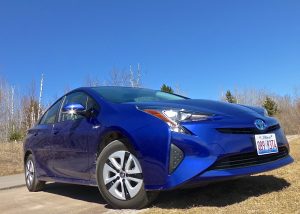
Prius styling has come a long way in its rise to icon status in Toyota’s fleet, which now includes even the Avalon.
By John Gilbert
The word “hybrid” seems like it should be considered the second half of a hyphenated phrase, with the first half, of course, being “Toyota.” As in “Toyota Hybrid.”
Other companies make hybrids., Some are excellent and break down barriers of new technology in the world of combining gasoline engines and electric motors. But Toyota, with its Prius, has established such a beachhead that some observers claim the Prius is Toyota’s new signature vehicle, replacing the ubiquitous Camry, and the RAV4 as the vehicle that best-defines Toyota.
But Toyota is hardly sitting still. Virtually everything the company makes has a hybrid version these days, from large sedans to compacts to SUVs. I recently had the chance to test drive two Toyota hybrids, and they are so different it seemed that combining them would describe the scope of Toyota’s hybrid reach.
First is the Toyota Avalon Hybrid, which takes Toyota’s unique luxury sedan and inserts its Hybrid Synergy Drive. At $39,789, we know that this is nobody’s Prius, because the compact Prius models — and there are three of them, these days — are priced between $20,000 and $30,000.
The Avalon began life back in the days when Toyota had expanded to form the Lexus luxury line, and the basic Lexus ES was basically a Camry all gussied up with fancy equipment as an entry-luxury level car. The first Avalon was pretty much the same thing, which prompted me to ask a Toyota executive why Toyota would build the Avalon, when it was so similar to the Lexus ES.
The explanation made perfect sense. A lot of Toyota buyers love their cars, but as they move up in station, they think buying a Lexus is pretentious, he said. So building the Avalon means those buyers can get their luxury and stay in the Toyota family.
A year ago, Toyota put a new body on the Avalon and made it much more than a fancy Camry. In fact, it gave Avalon the new stuff before Camry got it. Going to the hybrid model was a giant step, in a couple of ways. First, the styling calls for a larger and more dramatic lower grille, under the front bumper. The design is engineering oriented, but the stylists had to be excited, because the hybrid looks like the sporty Avalon.
When it came out, I declared the Avalon the best-looking sedan Toyota had ever made, and I stand by that claim. The Avalon Hybrid just looks a tad better.
Inside, it has all the luxury features any Lexus buyer might appreciate, and there is good reason the car performs and handles in a sportier fashion. The regular Avalon comes with a 3.5-liter V6, while the Hybrid comes with a 2.5-liter 4-cylinder and the battery-pack system with electric motors, boosting total power to 200 horsepower, running through front-wheel drive.
With revised suspension, the Avalon Hybrid corners well and handles, overall, like a sports sedan wearing luxury-car equipment. Included are all the latest safety and comfort features, like pre-collision and pedestrian detection, lane departure alert with steering assist, dynamic radar cruise control, automatic high beams, rear-view camera, electronic brake distribution and smart-stop technology.
Leather interior appointments and a 7-inch touch-screen, plus all the connectivity available, fill out the reasons for the Avalon Hybrid’s price tag. At that, it is a bargain, because with all the safety features the Avalon Hybrid at just under $40,000 delivers all the comfort you could want front and rear, plus 40 miles per gallon in town and 39 on the highway.
The new Prius line is just that — a. There are three models, the basic Prius, then the Prius C, and the Prius V.The model I test drove was the Prius Two Eco, which is a trim level that comes equipped to get optimum fuel economy. It has a larger battery pack, an 8.8 kW-hr lithium-ion battery compared to the heavier nickel-metal-hydride battery that was traditional in Prius models. A plug-in variation is also available.
The Prius takes Toyota’s 1.8-liter 4-cylinder and adds the electric complement for Toyota Synergy Drive. In that system, the power from the gasoline engine augments the electric motor power from the battery pack, and, in fact, comes on whenever the battery runs down, or when stepping harder on the gas demands maximum power.
The gas engine’s power, curiously enough, powers the generator which operates the wheels, meaning that the gas engine alone will not move the car. In all, the gas-electric combination offers 121 horsepower with — like the Avalon Hybrid — a CVT (continuously variable transmission) making the front wheels go.
While the Prius has an all-new look from a stylish redesign for 2017, it is priced at $26,544, and offers 58 miles per gallon in city driving, and 53 on the highway. The reason is that Toyota’s hybrid system works more efficiently in the stop and go driving in town than it does at sustained highway speed.
Naturally, the Prius doesn’t approach the Avalon’s luxury and comfort, but it offers a neat interior with instruments that let you trace your fuel-efficiency, and the seats are comfortable and supportive.
Handling is good, and the electric power boost gives the Prius surprisingly good acceleration, even with the CVT. The Bluetooth and other connectivity equipment is all in place, and enough of the costlier car’s features are installed on the Prius to make it well worth the sticker price.
The new model looks like a costlier alternative. In the Prius line, the more compact Prius C, the smallest member of the Prius family with a smaller 1.5-liter 4-cylinder, starting at a mere $21,000. The Prius V is longer and taller, almost like a wagon version, with a higher price tag closer to $30,000, and more power from the 1.8 and its battery unit, but its fuel economy drops to about 43 by EPA estimate for carrying the extra weight, and, presumably, extra cargo.
My pick is still the redesigned Prius Eco, and while it might surprise with its fun-to-drive approach while delivering its 58 mpg, it might make the perfect combination for an aspiring suburban family. If it is an affluent family, it would look perfect parked in that driveway next to the Avalon Hybrid.
Jeep Compass still here, finds bold new path
Filed under: Weekly test drives, Autos
By John Gilbert
Jeep’s ever-expanding world of hardy, all-terrain vehicles, the descending order of size and capability has been: Grand Cherokee, Cherokee, Patriot, Compass, Renegade, Wrangler. Or something like that, with the Wrangler probably the most capable off-roader, but also the most limited as far as all-purpose highway use goes.
When the Cherokee came out, it was an instant knockout, selling like hotcakes because it would do all the things the Grand Cherokee would do on the road, and would come close to duplicating the Wrangler’s off-roading. When the Renegade came out, as a cute, squarish little Jeep, it also proved surprisingly capable and is a great example of hoe effective the collaboration between Jeep and Fiat can be.
All of which made me think that the Patriot and Compass were probably destined to be eliminated. The Compass has been a lightweight vehicle, good for commuting and moderate foul-weather usage, but nowhere near as hardy as the Cherokee above it and the Renegade below.
Shows what I know.
For 2017, Jeep not only is keeping the Compass around, it has given it an entirely new life, from every standpoint — looks, styling, and capability. In fact, some critics think the narrow-eyed Cherokee looks like a rebel among the other Jeep vehicles, and for them, the new Compass takes on a more traditional Jeep look. You could make the case that the Compass now looks like a downsized Grand Cherokee.
Recently I was able to live with a new Compass for a week of driving on the cliffside hills of Duluth and the gently winding roadway along the North Shore of Lake Superior. In traffic and up hills, the Compass performed very well, never lacking for power or performance.
Under the hood is the now-familiar 2.4-liter Tigershark 4-cylinder engine, a jewel of a powerplant originally designed in joint venture by Hyundai in South Korea and used by Mitsubishi as well as Chrysler as its base engine for compact cars. With Fiat ownership, the adaptation of that company’s brilliant MultiAir system works fantastically well on the 2.4. That system starts with dual overhead camshafts, one for intake and one for exhaust, and then eliminates the intake cam, instead using a system of oil-filled tubes that connect exhaust valves with intake valves. Everytime the exhaust valves work, they force the intake valves to work too, in computer-perfect concert.
The result is an almost-turbocharged like increase in power and performance. As tested, the 2.4 with MultiAir2 offers 180 horsepower and 175 foot-pounds of torque — easily enough to send the Compass Latitude 4X4 on its appointed rounds, aided by its 9-speed automatic transmission. Read more
New Impreza hidden in plain view
Filed under: Weekly test drives, Autos
By John Gilbert
After pulling into the Target parking lot, I dropped off my wife, Joan, and engaged in my usual parking-lot gamesmanship, wherein I circle a couple of times just to see if I can find a closer-than-reasonable open spot near the store. I don’t mind the extra walk distance; it’s just a competitive game I like to play. In this case, I found one, and nosed my “Lithium Red Pearl” compact into the slot.
There was some sort of a sports discussion on the radio, so I sat there for a few minutes. A family parked its SUV and walked past. The fellow carrying a youngster turned back once, and then a second time, for a longer look. Then he smiled and walked on.
Another couple came by, same sort of thing. Both of them paused for a second look before continuing on. Later, at another parking space in downtown Duluth, Minnesota, a couple guys walked by and stopped. “What kind of car is that?” asked one.
“It’s the new Subaru Impreza,” I answered.
“You’re kidding,” he said. “Doesn’t look like any Subaru I’ve ever seen before.”
It’s hard to recall any Subaru sedan attracting that sort of interest from passers-by. But this is the new 2017 Subaru Impreza, which is like no other previous Impreza sedan.
This one is built on an all new Subaru Global Architecture platform, upon which all things Subaru from here on will be built, because it can house everything from a sports car to an SUV. Until a company revises, restructures and reinforces its mainstay platform, consumers never have reason to realize the need for such upgrading. Read more
As biggest Mazda, CX-9 fills key niche
Filed under: Weekly test drives, Autos
An automobile company is only as good as its customers determine. If its cars are too big, too small, too bulky, too stodgy, well, you can go down the road a ways and find a company that might more closely fit what you’re looking for.
Mazda, meanwhile, a comparatively small Japanese company, must be eavesdropping. Maybe there’s a wiretap. Or at the very least, they’ve been reading my mail. Because Mazda continues to make vehicles that impress me; no weaknesses, just assets. It holds over to their array of SUVs, too. I thought the first CX-9 was too big and a little ungainly, while the CX-7 was sporty and quick, but not economical enough.
When Mazda reorganized its engine and drivetrain manufacturing, and restyled its sedans, it came up with the CX-5, a midsize SUV that handles like a sports car and is perfectly compact. In the last year, Mazda brought out the CX-3, which is smaller and more compact, to the point that even I, who prefers as compact as you dare, find the back seat pretty cramped, if you intend for any humans more than 12 years old to ride back there.
Meantime, before redesigning its outstanding sedans — the compact Mazda3 and the midsize Mazda6 — the company came out with a completely redone CX-9 a year ago. Its largest SUV will satisfy the most discerning fancier of larger SUVs, who like to complain about compact crossovers being too small.
We got a chance to test-drive a 2017 Mazda CX-9, and my wife Joan, agreed with me about every characteristic of the vehicle. It was stunning to look at, in “snowflake white pearl,” which made the vehicle fairly glimmer in any light, and even stand out at nighttime.
The look of the CX-9 also impresses, because it has a bold and forceful open grille, with the top protruding a bit in an aggressively sporty manner. From the side, the silhouette makes a striking pose also, looking lower than it is, and sleek from front to rear, with all the contours and grooves fitting in well with the sometimes mystical concepts Mazda has for its flowing design.
Under the hood, Mazda’s jewels of technology prevail in every model, since the company went to its holistic “Skyactiv” design for creating engine that unify intake, exhaust, combustion chambers and everything else, internally as well as externally.
For those whose eyes glaze over when you talk about such technicalities, suffice it to say that Mazda gets more power and more fuel economy out of a given engine displacement than any other company, in normally aspirated form. Read more
Ram Power Wagon lives up to lofty image
Filed under: Weekly test drives, Autos
By John Gilbert
All right, we’ve established a few ground rules for large pickup truck wars, which have escalated to the point where the full-size trucks are so huge, the new breed of midsize trucks seems more than large enough. But if we did have to have a monster truck truck-off, so to speak, what would we pick to win?
That’s pretty impossible to say, because truck wars have such indelibly inscribed sets of favorites you’re sure to offend somebody when you pick something different. More likely, everybody makes their contribution.
Having previously reported on the Ford monster dualie F350, it’s hard to find anything bigger or bossier. The F250 Super Duty, meanwhile, is a monster that could be a candidate for king of the reasonably-sized monster trucks. And Ford’s Raptor is a specially built performance king for serious off-road duty with an ultra-macho on-road presence.
None of that prepares us for today’s topic, however. Which would be Dodge. Now Dodge, for example, gets no choice any more because Dodge trucks are no longer Dodge trucks; they are Rams. We will accept as a valid candidate the newest and most monster-like Ram of them all, the “Ram 2500 Power Wagon Crew Cab 4X4.” Got all that?
If a Power Wagon needs power, how about a 6.4-liter Hemi V8? This is the basic engine that powers the Hellcat Charger and Challenger models, with 707 tire-screeching horsepower, only this one is normally aspirated, and it is beefed up for heavy-duty trucking.
If you’re taking a group to see, for example, a Monster Truck competition, the Ram Power Wagon would be the ideal conveyance.
The heavy-duty grille rollbars add to the impression that you’re ready for some heavy use. And imbedded horizontally into the front bumper is a small cable with a little tag on the end. It is a 12,000 pound winch. Pull the tab and it uncoils. I figure you could use this thing to drive along after a blizzard and pull your neighbor’s semi out of a ditch, if necessary.
This monster is, indeed, a monster, and it even has a feature or two that puts it onto a higher monster plateau than the huge Fords. It is a “bad”-looking truck, in the manner of current vernacular where “bad” means “real good,” or, as humans used to say, “cool.” Only the Ford Raptor rivals the visual impact of the Power Wagon. Read more


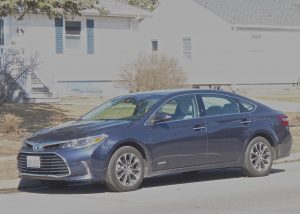
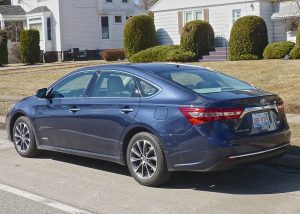
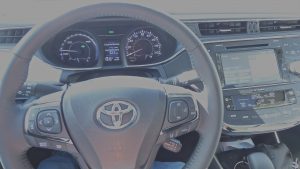
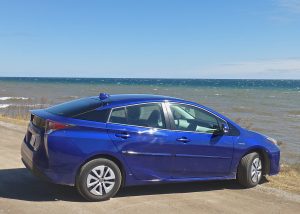
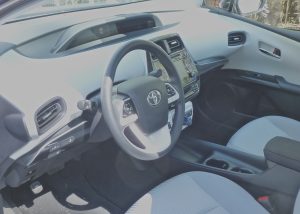

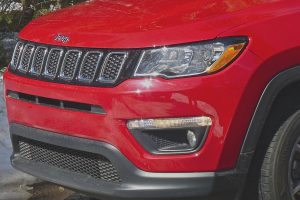
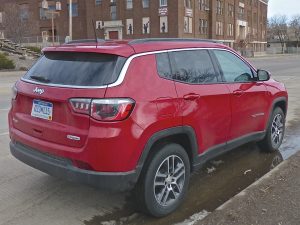

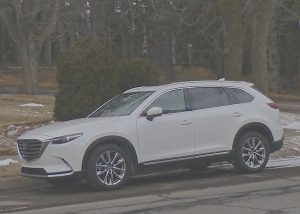
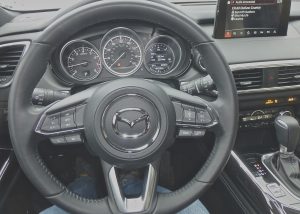
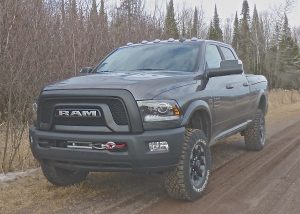

 John Gilbert is a lifetime Minnesotan and career journalist, specializing in cars and sports during and since spending 30 years at the Minneapolis Tribune, now the Star Tribune. More recently, he has continued translating the high-tech world of autos and sharing his passionate insights as a freelance writer/photographer/broadcaster. A member of the prestigious North American Car and Truck of the Year jury since 1993. John can be heard Monday-Friday from 9-11am on 610 KDAL(www.kdal610.com) on the "John Gilbert Show," and writes a column in the Duluth Reader.
John Gilbert is a lifetime Minnesotan and career journalist, specializing in cars and sports during and since spending 30 years at the Minneapolis Tribune, now the Star Tribune. More recently, he has continued translating the high-tech world of autos and sharing his passionate insights as a freelance writer/photographer/broadcaster. A member of the prestigious North American Car and Truck of the Year jury since 1993. John can be heard Monday-Friday from 9-11am on 610 KDAL(www.kdal610.com) on the "John Gilbert Show," and writes a column in the Duluth Reader.